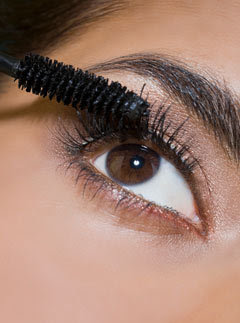
1;To ensure that your foundation lasts the whole day, using a primer as a base is essential. It prepares the skin for make-up and creates a protective base that foundation can 'grab onto'. Award winning make-up artist Sarah Brock Artistic Director for make-up at Daniel Sandler promises 'skin will remain shine-free and any pores or fine lines will be erased, leaving a smooth and perfect surface'.
2;Choose foundation to match your skin tone

The key to finding the perfect foundation to match your skin tone is to check the colour in natural daylight. After all, on your wedding day you are most likely to spend a large proportion of it in natural light. Remember to always check a foundation along the jaw line to guarantee you don't leave a tide-mark and extend it towards the neck. Any make-up artist will tell you the only way to apply foundation correctly is with a foundation brush, so invest in one before the big day.
3;Don't forget concealer

Although foundation will definitely give you the coverage you need to even out any blotchiness, concealer is still a bridal beauty must to get rid of any unwanted shadows that might persist after foundation application (for all the beauty sleep you get in the lead up, the night before might be a different story). Use a small concealer brush to erase dark circles.
4;Use powder to set foundation

It may seem like more make-up than you are used to, but remember that for photographs and all-day longevity, powder is essential to set the foundation and concealer. Sarah Brock, Artistic Director for make-up at Daniel Sandler says: 'Your foundation and powder should be identical shades. Use a large powder brush and dust lightly onto the face.'
5;Apply blusher

To avoid looking washed out for photographs, make sure you apply a subtle blusher to the apples of your cheeks. Smile in the mirror to ensure you pinpoint the apple exactly and gently blend the blusher upwards towards the hairline. Sarah Brock, recommends the Daniel Sandler watercolour blush (£11) to give a subtle, dewy look.
6;Use light eye shadow as base

Begin on your eyes by applying a light eye shadow all over the eyelid. This is the best way to open up the eye and make them stand out more in photographs. Then you can apply the colour of your choice from the upper lash line to the crease of your eye. Blending is the key to good make-up, so be sure you don't leave any harsh lines.
7;Opt for darker eye shadow for dramatic look

Some brides go for a darker eye shadow shade along the upper lash line, worn as close to the lashes as possible, you can also bring this shade to the lower lash line if you wish. To up the drama stakes, apply a dark eye pencil in the inner rim of the eye.
8;Go for two coats of mascara

Follow the eye shading by curling your lashes for a glamorous look and then apply two generous coats of waterproof black mascara.
9;Use lip liner that matches your lipstick
 shade
shadeThere are no hard and fast rules over whether to opt for a lipstick or a gloss on your wedding day. Some simply prefer one to the other. Whichever you veer towards, be sure to use a lip liner similar to the colour of your choice and blend using a cotton bud to prevent the lipstick or gloss from bleeding.
10;Blot your lips

When applying your lipstick, blot your lips with a tissue after one application and then reapply to guarantee a more lasting effect. If you want a helping hand to achieve the perfect make-up on your wedding day.




















